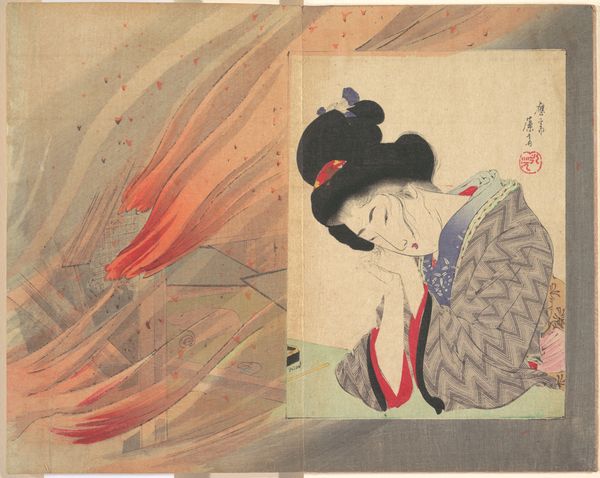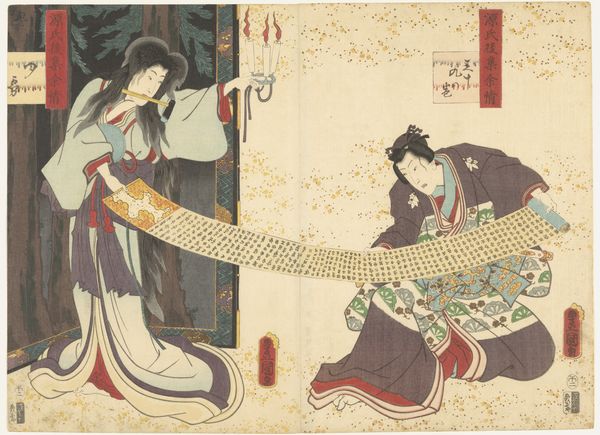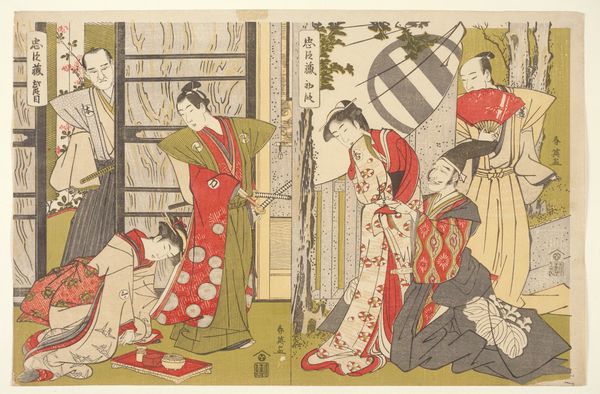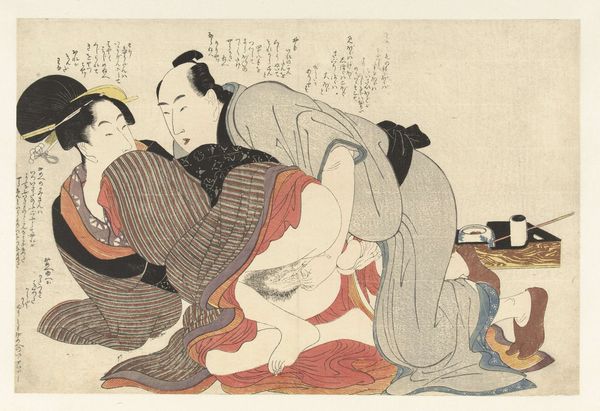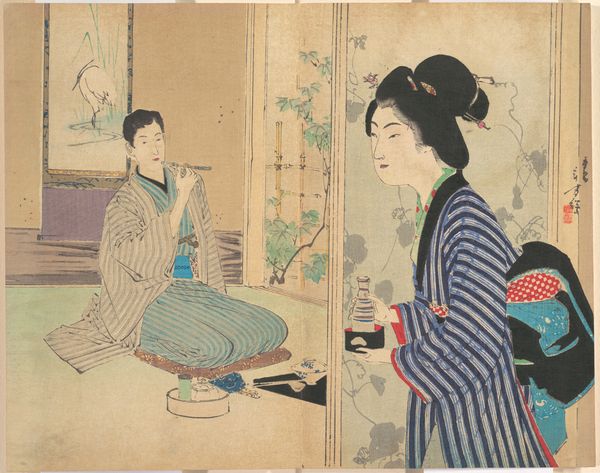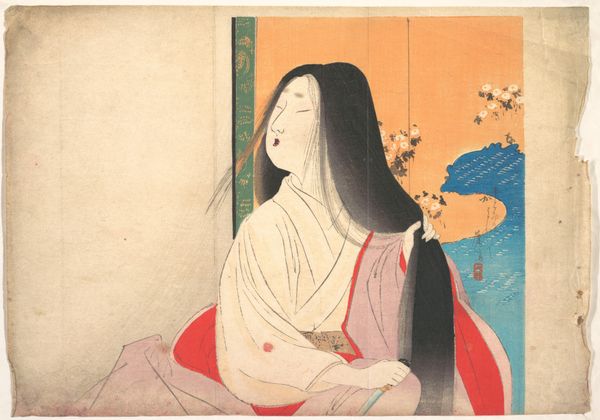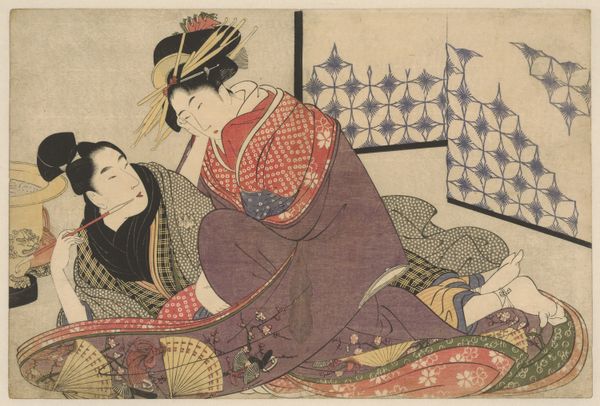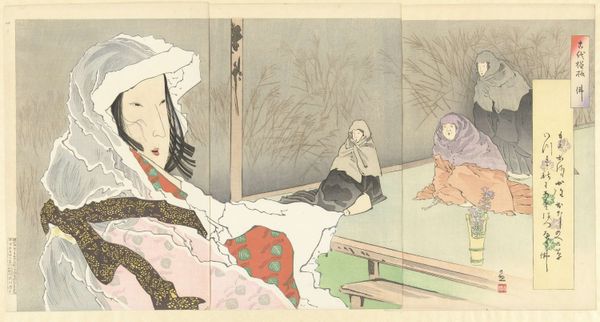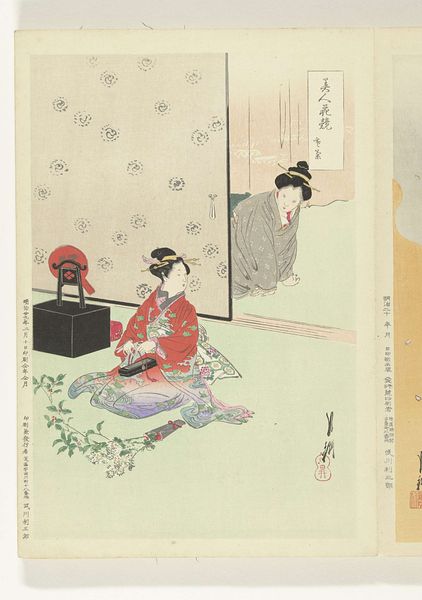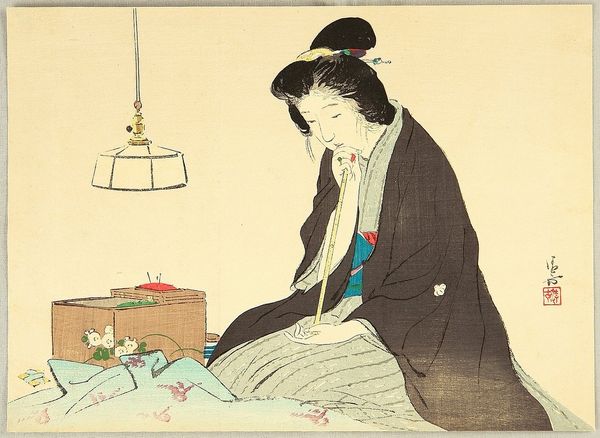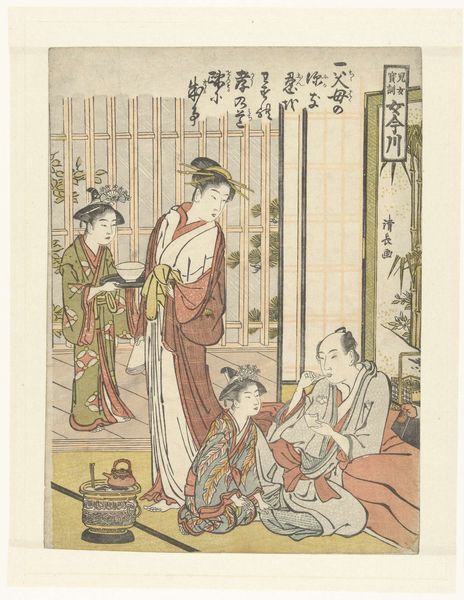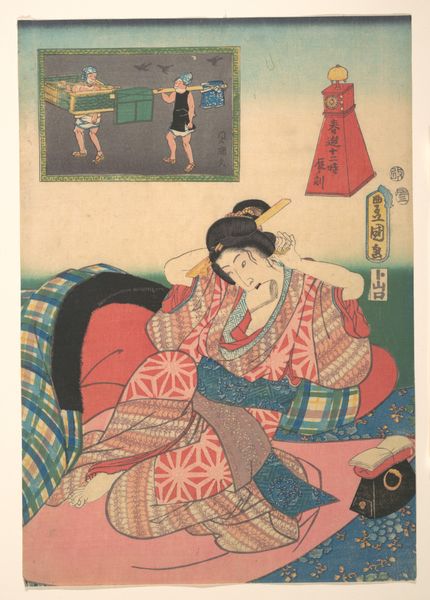
Surgical Ward' (Gekashitsu) from Bugei Kurabu (Literary Club) 1896 - 1916
0:00
0:00
Dimensions: Image: 8 1/2 x 11 1/4 in. (21.6 x 28.6 cm)
Copyright: Public Domain
Editor: So, this woodblock print, "Surgical Ward" by Mizuno Toshikata, feels incredibly intimate, almost voyeuristic. The weary figure, the cluttered space... it speaks of vulnerability. What do you see in this piece, beyond the surface level of genre painting? Curator: Beyond the apparent, I see a fascinating dialogue about the evolving roles of women in Meiji-era Japan. The subject's exhaustion, contrasted with the formal portrait behind her, points to the tensions between tradition and modernity, private life and public image, especially for women of that era. How does the print challenge our understanding of women’s position within the complex social structure? Editor: That's fascinating! The portrait in the background definitely throws the weariness of the central figure into sharper relief. I hadn't considered the social implications so directly. It’s almost as if she’s caught between worlds, burdened by expectations represented by that portrait. Curator: Exactly. Toshikata is actively participating in an ongoing conversation around identity and gender. Consider how ukiyo-e often presented idealized images of women. What’s being subverted here, and why is it powerful? Do you believe the artist had the goal to portray women's burdens explicitly? Editor: The contrast with those idealized images is definitely striking. Maybe it's less about explicitly showing the burden, and more about hinting at the internal struggles behind the composed facade, to create empathy for an every-woman figure caught in socio-political flux. The intimacy we talked about is a result. Curator: I appreciate how you're parsing out the difference between intent and effect here; that nuanced perspective acknowledges how art doesn't just illustrate social issues, it also intervenes in complex, lived realities. In considering the rise of feminism as a response to systemic oppression and misrepresentation, how can we better examine representations of race, class, and gender as dynamic instead of fixed markers in art historical canons? Editor: Thinking about art as intervention – as something that can actually *do* something, socially – it’s a very active, empowered position for the artist. It shifts our responsibility as viewers, too, toward being active interpreters of the piece. Curator: Precisely. The goal, then, is less about extracting simple morals but activating empathetic critical consciousness for today. Thank you for opening this dialog.
Comments
No comments
Be the first to comment and join the conversation on the ultimate creative platform.
